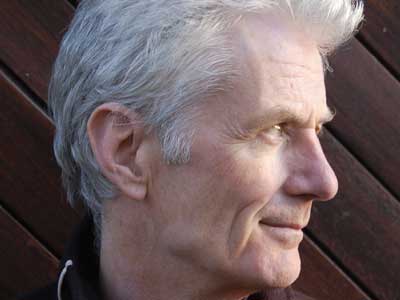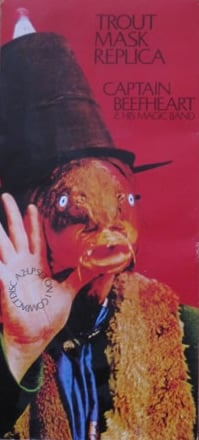/PAlogo_v2.gif) |
Close To The Edge (Yes): Form and Substance |
Post Reply 
|
Page 12> |
| Author | ||
jamesbaldwin 
Prog Reviewer 

Joined: September 25 2015 Location: Milano Status: Offline Points: 5744 |
 Post Options Post Options
 Thanks(0) Thanks(0)
 Quote Quote  Reply Reply
 Topic: Close To The Edge (Yes): Form and Substance Topic: Close To The Edge (Yes): Form and SubstancePosted: March 15 2019 at 15:14 |
|
|
Close To The Edge: Album number one, here in PA. It includes three songs: Close To The Edge (side A), And You And I, and Siberian Khatru (side B). But is it a real suite? How is his structure?
After having heard this suite for many years, here's to you my evaluation. Close To
The Edge (18:42) begins with country noises and a carpet of keyboards that
gradually increases the volume, then comes an instrumental intro guided by
Howe's guitar, which works on two lines: one does the solo, the other an underlying
phrasing at great speed, which in fact marks a faster pace than that of
Bruford's drums, which he prefers, with his creative jazzy style, not to beat
too much on the snare drum, but works the rhythm at the hips. Meanwhile, Squire
throws slashes with his mixed bass very high. The impression is therefore of
listening to a polyrhythmic piece, without true melody, very well chiselled,
refined, sophisticated, produced by the virtuosity of the musicians, which
lasts about two and a half minutes, when Anderson's singing arrives to signal
that it is time to start with the serious part, the storytelling. It is
always Howe's guitar that leads, this time painting the melody, flanked by
Squire's bass. The melody continues for a minute (up to about 3:50), then the
rhythm stops and, punctuated by Bruford's drums, begins the hyperspeed rhythm
that characterizes the strophes of this long song. This time the keyboards of
Wakeman arrive to support Howe's guitar, and together with Bruford's drums they
beat the rhythm, while Squire produces some turns of bass to make it more
lively. Anderson's singing begins, with its glacial timbre, and the very high,
contralto tone, which somehow transcends the rock music in the background,
turns off the heat like covering it with a white, pure, celestial liquid, and
this it is the contradiction of Yes, well-marked by the critic Scaruffi: the
romantic, warm, sentimental rock base is accompanied by the vocals of Anderson,
cold, celestial, like icy water that extinguishes the fire. Therefore, a
discrepancy is created, a conjunction of opposites, which produces a
conflicting result, because Anderson's voice would be more suitable for slower,
fluid, rarefied atmospheres of air or water, such as some kraut rock music
(Hosianna Mantra) or some Canterbury (Wyatt) or the more recent post-rock.
Instead this voice is associated with a melodic rock music, with a good rhythm,
which tends to act more on a corporal than an astral level. All this produces
conflict but also fascination, leaving in the music of Yes something that
clashes, conflicts, but that makes it at the same time more fascinating, more
stratified, less univocal, less simple, because it moves simultaneously in two
opposite directions. It is clear that But ...
Let's go back to the song! The singing arrives: strophe, second strophe and
immediately the chorus that then fades into a short solo by Howe that connects it to the bridge, at a more relaxed pace, then again comes the refrain, which
in the final salt of tone touch a solemn epic climax ("I Get Up, I Get
Down"). This structure, in fact an easy-listening melodic beat song, represents the backbone of everything in Close To The Edge. A piece of connection follows where Squire's bass is in evidence, then the keyboards report to the main melody: strophe, second strophe, chorus. All played with a different rhythm by Bruford and with greater use of the bass. In the refrain, more Wakeman's keyboards begins to be heard. Then bridge (where Howe's guitar feels good and there is an intermittent super high-pitched sound, I don't know if it's still produced by Howe or by Wakeman), then new chorus, which ends when we're at 8 minutes. Following
is a piece centered on low tones that introduce us to the instrumental break
dominated by Wakeman. The music slows down, the rhythm section disappears, the
song is deconstructed, leaving only abstract landscapes dominated by keyboards.
It seems to be in a cold cave and in fact you can hear the sound of drops
falling. Wakeman combines the sound of the synthesizer and comes the singing of
The
keyboards come back, and finally the singing starts again, on the hyperspeed
rhythm with which it started the song: strophe, second strophe, bridge this
time before the chorus, and finally again: "I Get Up, I Get Down",
which closes in fading returning to the initial country noises. Close To The Edge, in my opinion, is not a real suite. It is a song strophe-chorus dilated to no end, which repeats the chorus (refrain) 6 times in total. Yes have created a new song format, they take a commercial easy-listening song with a strophe-refrain-bridge-refrain structure and then they dilate it, speed it up, slow it down, accompany it with changes of rhythm and arrangement, support it with instrumental digressions and get to almost 20 minutes: and here’s to you a beat song disguised as a classical suite. The (high-class) operation unites a simple substance: an easily accessible music, to a complex form: its clothing with a high quotient of virtuosity, refined arrangement, polyrhythmic instrumental pieces. And now, if you want, free discussion. Edited by jamesbaldwin - March 15 2019 at 15:47 |
||
|
"Happiness is real only when shared"
|
||
 |
||
Frenetic Zetetic 
Forum Senior Member 

Joined: December 09 2017 Location: Now Status: Offline Points: 9233 |
 Post Options Post Options
 Thanks(0) Thanks(0)
 Quote Quote  Reply Reply
 Posted: March 15 2019 at 17:31 Posted: March 15 2019 at 17:31 |
|
|
As a massive yes fan, Chris Squire fan, and CTTE fan boi...
...I agree completely with your assertion. CTTE is not a a suite. I can't say I really personally care, however. Total Mass Retain, for the time, has such a solid and free grooving bass line. That section of song is extremely underrated in combination with Anderson's vocal/lyrical delivery. Yes definitely created a new song format as you said.
|
||
|
"I am so prog, I listen to concept albums on shuffle." -KMac2021 |
||
 |
||
Tom Ozric 
Prog Reviewer 

Joined: September 03 2005 Location: Olympus Mons Status: Offline Points: 15916 |
 Post Options Post Options
 Thanks(0) Thanks(0)
 Quote Quote  Reply Reply
 Posted: March 15 2019 at 18:48 Posted: March 15 2019 at 18:48 |
|
|
Very good analysis of the music. I used to worship this album back in the day (late-80’s....) but not as much now. I think the first few minutes of the title track sounds like a train-wreck. I dunno what happened to me

|
||
 |
||
ExittheLemming 
Forum Senior Member 

Joined: October 19 2007 Location: Penal Colony Status: Offline Points: 11415 |
 Post Options Post Options
 Thanks(0) Thanks(0)
 Quote Quote  Reply Reply
 Posted: March 15 2019 at 19:47 Posted: March 15 2019 at 19:47 |
|
|
Where Close to the Edge' becomes unique is that it does not exploit any of the structural
tricks and compositional conceits used by its contemporaries. Where Emerson would assimilate
classical sources and themes into his own creations and Genesis would segue shorter song and
instrumental fragments into a pseudo suite, 'Yes' dispense with either approach entirely. Close
to the Edge's title track is a pop song, yes, one mother of a long one to be sure, but still a
pop song for all that. Don't let the 'P' word cause your heckles to rise here, as I mean 'popular
music song' and not in any pejorative sense.
Furthermore: There are no traces of classical symphonic writing to be found.(Which often explains their 'symphonic prog' label stubbornly refusing to adhere to the bottle) Jazz and blues vocabulary are absent. Riff based composition is nowhere to be seen. These are observations, not criticisms as there is much to admire and cherish on this very fine album but I do think it is long overdue some sort of critical revision as for way too long CTTE has become akin to prog's (white) elephant in the room. |
||
 |
||
AFlowerKingCrimson 
Forum Senior Member 

Joined: October 02 2016 Location: Philly burbs Status: Offline Points: 16209 |
 Post Options Post Options
 Thanks(0) Thanks(0)
 Quote Quote  Reply Reply
 Posted: March 15 2019 at 20:28 Posted: March 15 2019 at 20:28 |
|
|
Close to the Edge a pop song? Hah. I guess all the songs on dark side of the moon and wish you were here are pop songs too. :D Not to mention all PG era Genesis songs. If CTTE is a pop song then it doesn't sound like any pop song I've ever heard not to mention the fact it's maybe just a little bit too long to be a standard pop song.
 Edited by AFlowerKingCrimson - March 15 2019 at 20:30 |
||
 |
||
Frenetic Zetetic 
Forum Senior Member 

Joined: December 09 2017 Location: Now Status: Offline Points: 9233 |
 Post Options Post Options
 Thanks(0) Thanks(0)
 Quote Quote  Reply Reply
 Posted: March 16 2019 at 02:14 Posted: March 16 2019 at 02:14 |
|
Exactly. It's a pop song, but it's not really "pop" per say. One of the best, most amazing things about Yes, is, they really did have their own style, sound, and approach to composition. CTTE, even with a critical observation, continues to reveal more and more epic-ness to me over time (very few albums do this).
|
||
|
"I am so prog, I listen to concept albums on shuffle." -KMac2021 |
||
 |
||
jamesbaldwin 
Prog Reviewer 

Joined: September 25 2015 Location: Milano Status: Offline Points: 5744 |
 Post Options Post Options
 Thanks(0) Thanks(0)
 Quote Quote  Reply Reply
 Posted: March 16 2019 at 04:28 Posted: March 16 2019 at 04:28 |
|
|
^The substance is a (good) pop song. The form is a superb vortuosistic and extremely well arranged suite,
with moments of great pathos and moments of sophisticated polyrhythmic rhythm.
Edited by jamesbaldwin - March 16 2019 at 04:30 |
||
|
"Happiness is real only when shared"
|
||
 |
||
ExittheLemming 
Forum Senior Member 

Joined: October 19 2007 Location: Penal Colony Status: Offline Points: 11415 |
 Post Options Post Options
 Thanks(0) Thanks(0)
 Quote Quote  Reply Reply
 Posted: March 16 2019 at 05:28 Posted: March 16 2019 at 05:28 |
|
|
^Agreed. Many on PA just seem to suffer from an irrational fear of those musical elements their Prog heroes happily acknowledge as being taken/inspired from pop music: Popphobia? (Catchiness is only bad if it's a disease...)
|
||
 |
||
AFlowerKingCrimson 
Forum Senior Member 

Joined: October 02 2016 Location: Philly burbs Status: Offline Points: 16209 |
 Post Options Post Options
 Thanks(0) Thanks(0)
 Quote Quote  Reply Reply
 Posted: March 16 2019 at 09:48 Posted: March 16 2019 at 09:48 |
|
|
I really don't get how it's a pop song. I haven't studied music composition or music theory so maybe you guys know and understand something I don't but I don't hear verse chorus verse in the song structure and I don't hear anything that would make it pop. Plus, how many other 20 minute pop songs can you think of? If it really is a pop song then does that mean "dogs," "echoes," other long PF songs and "supper's ready" are pop songs? What about thick as a brick?
|
||
 |
||
Lewian 
Prog Reviewer 

Joined: August 09 2015 Location: Italy Status: Offline Points: 14110 |
 Post Options Post Options
 Thanks(0) Thanks(0)
 Quote Quote  Reply Reply
 Posted: March 16 2019 at 10:46 Posted: March 16 2019 at 10:46 |
|
|
Interesting... is there a 3:30 version of the essential pop song bits around? I think I half agree with the analysis... or maybe 75%. Chances are that condensed to 3:30 it wouldn't work that well, the basic melody is nice once in a while but would probably get on my nerves if it and the chorus would make the whole song. But then, I'm not sure, would really like to hear this to find out. What I do think they got right here is that the different parts, as different as they are, make a pretty coherent whole and there are themes and motifs that connect it all. Yes, this is based on a melody and chorus that are quite accessible and straight, but elements to shake things up are woven in at any time. They never really leave the "straight song", yet they subvert it from beginning to end. That said I have to admit I hardly ever listen to the studio album, because compared to the versions on Yessongs all songs sound quite lame and constructed to me.
|
||
 |
||
dr wu23 
Forum Senior Member 

Joined: August 22 2010 Location: Indiana Status: Offline Points: 20468 |
 Post Options Post Options
 Thanks(0) Thanks(0)
 Quote Quote  Reply Reply
 Posted: March 16 2019 at 12:11 Posted: March 16 2019 at 12:11 |
|
|
Fantastic album....perhaps my favorite by them though the Yes album and Fragile are damn near as good imho......but I'm not sure I would place it as number one of all time on the prog rock list here at PA though obviously the votes are there. Regarding what should be no. 1....imho that should probably rotate from month to month since there are so many excellent bands and albums. I would have a hard time deciding what album I would place at no 1 on any given day.
|
||
|
One does nothing yet nothing is left undone.
Haquin |
||
 |
||
Tom Ozric 
Prog Reviewer 

Joined: September 03 2005 Location: Olympus Mons Status: Offline Points: 15916 |
 Post Options Post Options
 Thanks(0) Thanks(0)
 Quote Quote  Reply Reply
 Posted: March 16 2019 at 15:20 Posted: March 16 2019 at 15:20 |
|
|
||
 |
||
micky 
Special Collaborator 

Honorary Collaborator Joined: October 02 2005 Location: . Status: Offline Points: 46828 |
 Post Options Post Options
 Thanks(1) Thanks(1)
 Quote Quote  Reply Reply
 Posted: March 16 2019 at 17:04 Posted: March 16 2019 at 17:04 |
|
nice..  It iis like I have said many times over the years. Yes were fans of pop music, not jazz, not classial music. Their stated goal was to merge pop music with instrumental validity. The structure of CttE is of a standard pop song intro/verse/chorus/verse/chorus/middle8/instrumental-break/verse/chorus/outro format. It iis like I have said many times over the years. Yes were fans of pop music, not jazz, not classial music. Their stated goal was to merge pop music with instrumental validity. The structure of CttE is of a standard pop song intro/verse/chorus/verse/chorus/middle8/instrumental-break/verse/chorus/outro format.The difference was of course that on CttE they took the hooks and melodies one finds on standard pop songs and expanded upon them. That was the genius of it. And as one reviewing wag was famously said, if it hadn't been perfected to olympian standards.. you would have the sonic equivalent of Celine Dion's My heart will go on...the Love Theme from the Titanic pumped into your brain.. or at least till you lost your marbles and blew your f**king brains out to escape the torture. It wasn't like standard prog 'epic's.. don't like a section.. just wait.. it will change due to cut and paste.. song fragment structures of nearly every single prog epic ever done. It was a purely single composition.. the first and only 18 minute pop song. well done sir... here.. have another clappie..
 |
||
|
The Pedro and Micky Experience - When one no longer requires psychotropics to trip
|
||
 |
||
Tom Ozric 
Prog Reviewer 

Joined: September 03 2005 Location: Olympus Mons Status: Offline Points: 15916 |
 Post Options Post Options
 Thanks(0) Thanks(0)
 Quote Quote  Reply Reply
 Posted: March 16 2019 at 17:20 Posted: March 16 2019 at 17:20 |
|
|
^ ......and Asia crafted Pop songs without expanding on themes.......
|
||
 |
||
AFlowerKingCrimson 
Forum Senior Member 

Joined: October 02 2016 Location: Philly burbs Status: Offline Points: 16209 |
 Post Options Post Options
 Thanks(0) Thanks(0)
 Quote Quote  Reply Reply
 Posted: March 16 2019 at 17:21 Posted: March 16 2019 at 17:21 |
|
|
There's lot's of songs that have that verse chorus structure. It doesn't make them pop songs. Country, vocal jazz, indie rock, alternative rock, metal, etc. Lot's of different genres(most in fact)have verse chorus song structures and yet they are not pop. But if having those structures makes it pop then pretty much anything except the most out there or deliberate prog stuff could be called pop. "Run to the hills" by Iron Maiden has a verse chorus structure(not to mention lot's of neo prog). Is that pop too?
Edited by AFlowerKingCrimson - March 16 2019 at 17:48 |
||
 |
||
Frenetic Zetetic 
Forum Senior Member 

Joined: December 09 2017 Location: Now Status: Offline Points: 9233 |
 Post Options Post Options
 Thanks(0) Thanks(0)
 Quote Quote  Reply Reply
 Posted: March 17 2019 at 01:41 Posted: March 17 2019 at 01:41 |
|
Steve Howe was also in Asia, so are we surprised?!
|
||
|
"I am so prog, I listen to concept albums on shuffle." -KMac2021 |
||
 |
||
Tom Ozric 
Prog Reviewer 

Joined: September 03 2005 Location: Olympus Mons Status: Offline Points: 15916 |
 Post Options Post Options
 Thanks(0) Thanks(0)
 Quote Quote  Reply Reply
 Posted: March 17 2019 at 02:48 Posted: March 17 2019 at 02:48 |
|
|
||
 |
||
WeepingElf 
Forum Senior Member 
Joined: August 18 2013 Location: Germany Status: Offline Points: 373 |
 Post Options Post Options
 Thanks(0) Thanks(0)
 Quote Quote  Reply Reply
 Posted: March 17 2019 at 06:40 Posted: March 17 2019 at 06:40 |
|
|
I think the punctus saliens here is that "Close to the Edge" is more or less a sonata form - but the difference between the sonata form and the pop song is mainly one of size. The sonata form goes like this: Intro - main theme - second theme - main theme - second theme - development - main theme - second theme - coda A pop song goes like this: Intro - verse - chorus - verse - chorus - bridge/solo - verse - chorus - outro As you can see, the same structure, only that in the sonata form, the verse is called "main theme", the chorus is called "second theme", the bridge/solo is called "development", and the outro is calld "coda". And, of course, a sonata form is much longer than a pop song. Everything is just bigger. That's all! |
||
|
... brought to you by the Weeping Elf
"What does Elvish rock music sound like?" - "Yes." |
||
 |
||
ExittheLemming 
Forum Senior Member 

Joined: October 19 2007 Location: Penal Colony Status: Offline Points: 11415 |
 Post Options Post Options
 Thanks(1) Thanks(1)
 Quote Quote  Reply Reply
 Posted: March 17 2019 at 07:26 Posted: March 17 2019 at 07:26 |
|
|
^ I think what we might recognise as traditional song structures existed in antiquity as folk music long before the development of classical sonata form in all its myriad variations. Conflating the two seems as much of a stretch as putting soda in a wine bottle and calling it Chateau de Fizz
 . It's what the identifiable sections contain and how that thematic material is developed as to where the difference perhaps lies: Contrasting keys are an identifying feature of sonata form e.g. between the exposition/recapitulation sections and such modulations are the exception in pop music. The development section in sonata form is very often treated as tonally unstable or at least ambivalent which is very rarely the case in pop songs. Verse-chorus form is also more sectional i.e while an exposition
usually has a transition between 1st and 2nd themes bringing us to the new key, in Pop songs, verses tend to move straight into choruses and if there’s any
pre-chorus in between, its role is typically to build up dynamic energy rather
than to modulate to another key centre. However, these are all very broad brush strokes and I don't necessarily disagree with the gist of your post but let's guard against thinking pop song structures 'grew out of' any historical classical forms. . It's what the identifiable sections contain and how that thematic material is developed as to where the difference perhaps lies: Contrasting keys are an identifying feature of sonata form e.g. between the exposition/recapitulation sections and such modulations are the exception in pop music. The development section in sonata form is very often treated as tonally unstable or at least ambivalent which is very rarely the case in pop songs. Verse-chorus form is also more sectional i.e while an exposition
usually has a transition between 1st and 2nd themes bringing us to the new key, in Pop songs, verses tend to move straight into choruses and if there’s any
pre-chorus in between, its role is typically to build up dynamic energy rather
than to modulate to another key centre. However, these are all very broad brush strokes and I don't necessarily disagree with the gist of your post but let's guard against thinking pop song structures 'grew out of' any historical classical forms. |
||
 |
||
WeepingElf 
Forum Senior Member 
Joined: August 18 2013 Location: Germany Status: Offline Points: 373 |
 Post Options Post Options
 Thanks(0) Thanks(0)
 Quote Quote  Reply Reply
 Posted: March 17 2019 at 08:46 Posted: March 17 2019 at 08:46 |
|
|
You are right, there is more than size what distinguishes the sonata form from the structure of a typical pop song (which, as you observe, dates back to folk songs and is much older than the sonata form - so if one grew out of the other, it is the sonata form growing out of the song form and not the other way). There is a lot of stuff going on in a sonata-form piece that usually isn't found in a pop song, such as the second theme being in the dominant key to the main theme's key, complex modulations in the development, and other stuff you don't find in a typical pop or folk song. |
||
|
... brought to you by the Weeping Elf
"What does Elvish rock music sound like?" - "Yes." |
||
 |
||
Post Reply 
|
Page 12> |
| Forum Jump | Forum Permissions  You cannot post new topics in this forum You cannot reply to topics in this forum You cannot delete your posts in this forum You cannot edit your posts in this forum You cannot create polls in this forum You cannot vote in polls in this forum |